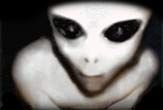The Reality of Recent UFO Sightings

America has seen a spate of alleged UFO sightings in recent weeks and months. Eyewitnesses in Arizona, Illinois, Arkansas, North Carolina, and other states have reported seeing mysterious lights and objects in the sky.
Among the sightings:
- In November 2006, United Airlines employees reported seeing a large, dark, “saucer-shaped” craft over a terminal at Chicago’s O’Hare airport. It hovered for a while, then suddenly rose and shot up into the sky.
- In January 2007, multiple eyewitnesses reported seeing a formation of mysterious bright lights in the sky over western Arkansas, moving too slowly to be aircraft.
- Similar lights were reported this week over Phoenix.
Could such sightings be alien spacecraft? Of course it’s possible; many things are possible. The question is not what is possible but what is probable—what evidence and logic suggest. Before jumping to conclusions about ETs in spacecraft, we must look at the most likely explanations.
What's more likely?
Without some independent confirmation or other evidence, it’s hard to know what the United Airlines employees might have seen. But is it more likely that they saw an optical illusion, or that a large, unknown object hovered over one of the country’s busiest airports without being seen by anyone else or appearing on radar?
- Strange Circles of Light Explained
- North America's 'Loch Ness Monster' Spotted Again
- The Story Behind the 'Alien Autopsy' Hoax
- The Reality of Bigfoot
The lights over Arkansas and Arizona had something in common: they were both seen near military bases, at a time when Air Force pilots were dropping very bright flares from parachutes during training. The flares, producing in some cases nearly 2 million candlepower, would be visible for miles.
So is it more likely that the mysterious lights were actually alien spacecraft, or that people simply saw the aerial magnesium flares released at the same time and place? (It would in fact be much more mysterious if no one had reported seeing lights in the sky at that time!)
Sign up for the Live Science daily newsletter now
Get the world’s most fascinating discoveries delivered straight to your inbox.
Any object seen in the sky, especially at night, can be very difficult to identify because of the limitations of human perception. Knowing how far away something is helps us determine its size and speed; that’s why we know that moving cars seen at a distance aren’t really smaller, nor are they moving slowly; it’s simply an optical illusion. If the eyewitness doesn’t know the distance, then he or she cannot determine the size. Is that thing in the sky twenty feet long and 200 yards away, or is it 200 feet long and a mile away? It’s impossible to know, and this makes estimates of size, distance and speed very unreliable.
Recipe for a UFO
There is a more fundamental problem with such sightings, and it is revealed in the acronym UFO: unidentified flying object.
All that is needed to create a UFO sighting is one person who may not recognize a light or object in the sky. But just because one person—or even several people—can’t immediately identify or explain something they see doesn’t mean that someone else with more training or experience (or even the same person seeing the same object from a different angle) may not instantly recognize it.
Astronomers, who spend the most time looking at the sky, rarely report UFOs. This is because they often recognize aerial phenomena (odd clouds, comets, etc.) that the average person would consider strange or unexplainable.
Benjamin Radford is an investigator with the Committee for Skeptical Inquiry, and author of three books and hundreds of articles on UFOs, Bigfoot, psychics, and other mysterious phenomena.
- Top Ten Unexplained Phenomena
- Fantastic Tales: Urban Legends Debunked
- All About Urban Myths, Legends, and Hoaxes
- 10 Alien Encounters Debunked
- The Biggest Popular Myths

